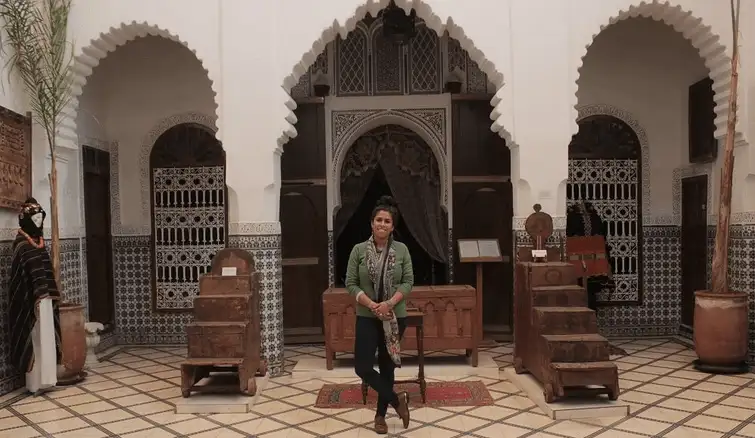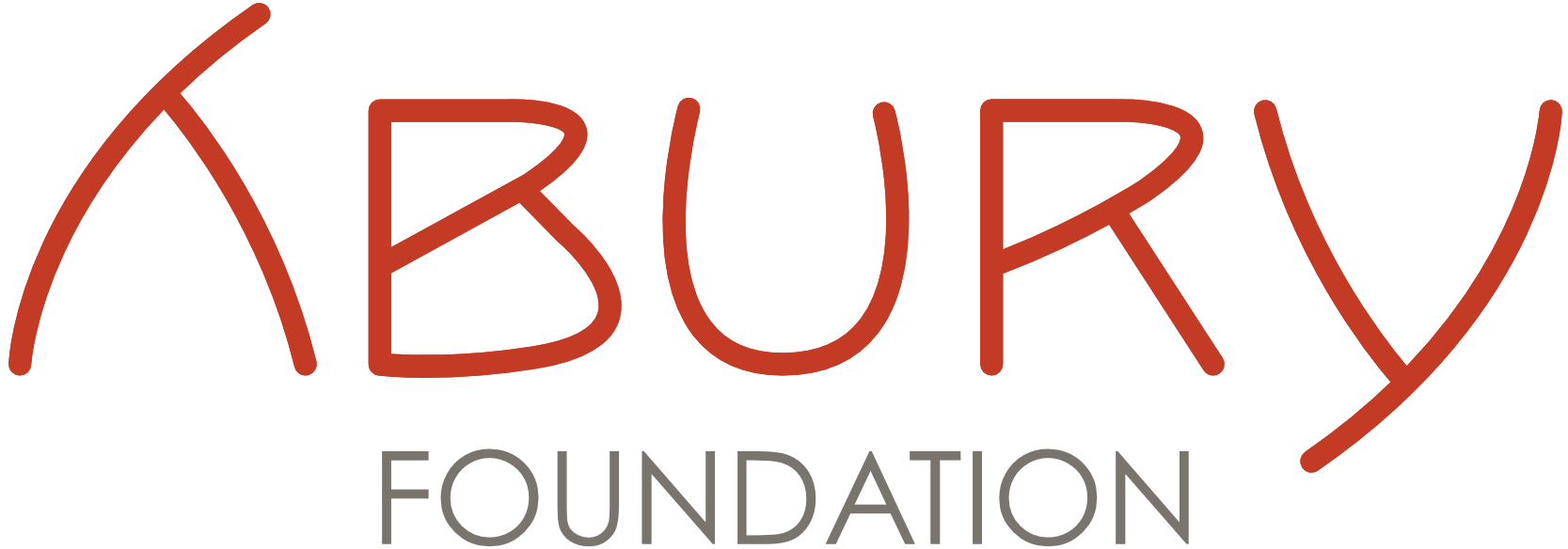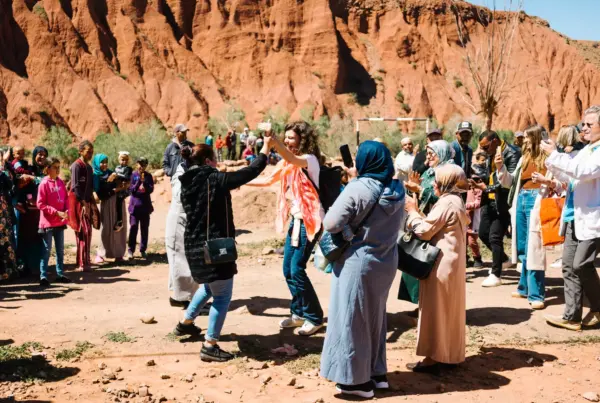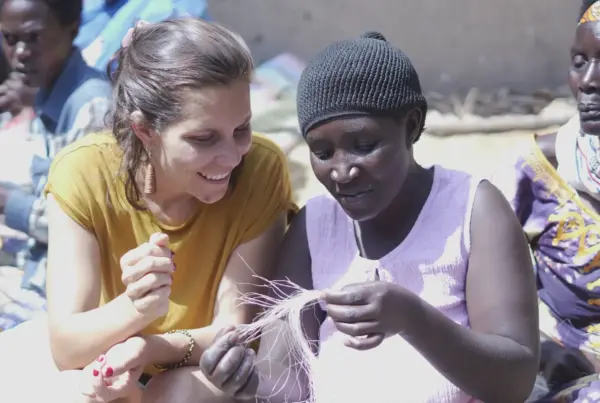We meet Maha Alouani, expert in Moroccan history & ethnography
Maha Alouani recently completed her Bachelor in International Relations from Queen Mary University in London and is currently Director of the Heritage Museum in Marrakech, Morocco. Her work has piqued her curiosity about Moroccan history and tribal ethnography. She is also interested in contemporary conflicts in East Africa and on the Horn, speaks several languages and is learning more. She loves music from Mali. Born in Marrakech and partly in Morocco, partly in Maha, who grew up multicultural in Great Britain, is learning the Tifinagh alphabet and is writing a book on 18th-century Andalusian embroidery and another on Berber carpets. Their interest in world affairs and in cultural anthropology is the natural consequence of their upbringing.

Maha, please describe yourself in three words …
Curious, clumsy, optimistic.
We believe hands tell stories. What do your hands say about you?
That I’m obsessed with old Moroccan silver rings … and hand cream!
What’s the last thing you made with your hands?
I’m in the process of curating a small gallery of Moroccan antiques. When choosing the smaller pieces (silver jewelry and accessories) I noticed that some earrings were missing hooks. I spent the afternoon fixing them. Now they are wearable again.
If you could choose, what would you like to be able to do with your hands?
Imagine that you automatically receive information about an object that you touch. What if, by just touching it, you could delve into the past of this item and get vivid images of its manufacture by a craftsman? What if you could live for a moment in each creation phase of each object? You would be able to smell its surroundings and would live for a moment in the time in which it was made and travel to its place of birth. That would be an enriching way to learn!
“One of a Mind” underscores our strong belief in equality and the value of sharing. How does intercultural exchange benefit our global society in your eyes?
I think there is so much that can be gained through cultural exchange! Think of the inner joy that you feel as soon as you receive new information on a topic that interests you. There is so much to learn from each other, especially when we come from different cultural backgrounds. I spend a lot of time researching historical similarities in different population groups, especially through my investigation of motifs in textiles. For example, the diamond motif is omnipresent on all continents: let’s take the diamond shapes in the Viking caves in Denmark and in the Moroccan Berber carpets – in both cases they represent the body of the woman. Another example is the resemblance of the penannular Celtic fibula to the Berber fibula: it was with their help that clothing was held in place and it was an integral part of traditional women’s clothing of a period. The belief that we have more in common than differences is widespread and is confirmed by ethnology.
You were born in Morocco but lived abroad for a while. What makes Morocco different from other countries? What does Morocco have that no other culture has?
I can’t really answer that because I can’t make comparisons with cultures that I don’t know yet. Since there are over a hundred tribes in Morocco and each tribe has its own culture, it is difficult to speak of a uniform Moroccan culture. Needless to say, I’m not yet familiar with all the different cultures of Morocco, let alone those of all other countries!
To talk about culinary – how would you describe the “taste” of Morocco and what is your favorite?
A popular Moroccan dish is called “Terda”. The basic ingredients are bread, beans, lentils, tomatoes and onions. The idea behind this is to make a dish with what’s left of the week to share with family and friends. This is quite imaginative, but no compromises are made on this world famous Moroccan dish. I see Terda as an expression of the Moroccan way of life – making something great out of simple ingredients. Ingenuity and sharing are values that are deeply rooted in the population, from reusing old clothes as mops to weaving spectacular boucherouite rugs (so-called rag rugs) from recycled fabric.
You manage the Heritage Museum in Marrakech. How can Moroccan heritage inspire other cultures to live together in peace?
Morocco as we know it is a country of diversity. You can see this immediately when you study handcrafted Moroccan artifacts in the Heritage Museum of Marrakech. Morocco was part of the Silk Road, which revolutionized global trade, bridged the Atlantic and Mediterranean, and crossed Africa. It became a crossroads for many cultures. We can study this on the basis of the diverse craftsmanship of the country. For example, we can see some eerie similarities in the embroidery from the city of Fez and that of Romania and Croatia. A closer look at the history of embroidery would reveal that Andalusian embroidery came to Morocco from exiled Balkan embroiderers in the 15th century. They passed this craft on to young aristocratic girls in northern Morocco. Perhaps from concrete examples of mutual influence – as seen in embroidery – we can learn some lessons, such as that we have a lot more in common than we might think. We just need to take the time to take a closer look. Beauty emerges from diversity! Fès embroidery has become an icon in today’s fashion industry and we have to thank the Balkan embroiderers living in exile in Morocco for that.



